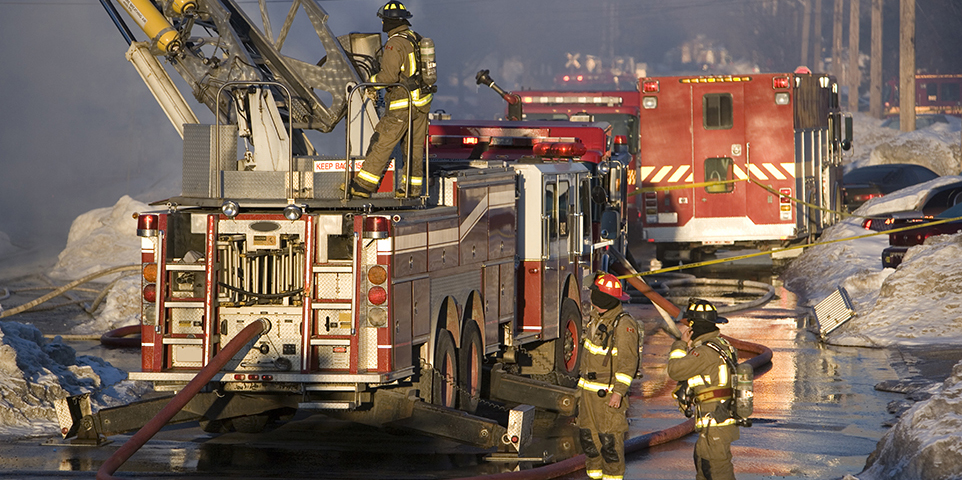MEMBERSHIP
AMPLIFY
EN ESPAÑOL
Connect With Us
- Popular search terms
- Automobile
- Home + Renters
- Claims
- Fraud
- Hurricane
- Popular Topics
- Automobile
- Home + Renters
- The Basics
- Disaster + Preparation
- Life Insurance

When a major, federally declared disaster occurs, the Federal Emergency Management Agency (FEMA) offers assistance to individuals who've sustained damages. If you're the victim of a qualified disaster, here are some FAQs—and answers—about getting FEMA help.
A. The DiasterAssistance.gov website has a tool that will help you find out if you live in a declared disaster area.
A. Assistance may be available if you suffered damages from a previous, federally declared disaster.
A. If anyone in an affected household is a U.S. citizen, non-citizen national or qualified alien (aka a Green Card holder), he or she is eligible to apply for FEMA disaster assistance.
If a minor child is eligible by these criteria, even when other members of the family are not, the family can file an application on the child’s behalf. In this case, all identification documents have to be under the child’s name and Social Security number. A copy of the child’s Social Security card and birth certificate are acceptable verification. This information can be mailed to FEMA or brought to a Disaster Recovery Center.
A. No. FEMA assistance does not affect benefits from other federal programs and is not considered taxable income.
A.You can apply at www.DisasterAssistance.gov or call the FEMA Helpline. For comprehensive information about the program, FEMA offers a downloadable book entitled, Individuals, Households Program Unified Guidance.
The process slightly differs depending on your insurance situation.
A.If you do not have insurance, an inspector will contact you after you apply to schedule a time to meet you at your damaged home.
If you do have homeowners insurance, you need to file your insurance claim and provide FEMA with a decision letter (settlement or denial) from your insurance company before FEMA issues an inspection. There is an exception for situations where the damages are caused by flooding and you have flood insurance. In that instance, FEMA will issue an inspection before receiving a copy of your flood insurance decision letter to evaluate your eligibility for temporary living expenses since these are not covered by flood insurance.
A. About 10 days after the inspection FEMA will decide if you qualify for assistance. If so, FEMA will send you a check by mail (or direct deposit) with an explanation of what the money covers (i.e. rent or home repair).
A. If FEMA determines that you are ineligible for any reason, you will receive a letter and be given a chance to appeal. Appeals must be in writing and mailed within 60 days of the determination. Read the letter carefully for the reason of ineligibility before filing your appeal.
A. The SBA offers low interest disaster loans to assist small businesses and homeowners in their recovery. To be considered for a loan or certain types of grant assistance, such as transportation, personal property, and moving and storage, you must complete and return the application.
A. No. If two members of the same household apply for the same damaged home, FEMA assistance could actually be delayed. If more than one member of a household has applied, the additional registrants should call the FEMA Helpline to withdraw their applications. Once this occurs, the original registration for the household can be processed for assistance.
A. No. You may be eligible for reimbursement of your cleanup and repair costs, even if repairs are complete. The important thing is to document the expenses you incur. It is a good idea to take before-and-after photos for your records.
A. If you cannot live in your home because of disaster damage and you did not receive rental assistance, please contact FEMA to check on your status. It could be that during the inspection you indicated that you were unwilling to relocate. If so, FEMA would not move forward to issuing a rental assistance check for you to move to another location.
A. Rental assistance can be provided for up to 18 months from the date of declaration while you are setting up your permanent housing plan. If you still cannot return to your home after your initial period of assistance, you will be sent a letter on how to recertify.
A. As soon as you receive an insurance settlement, you should provide a copy to FEMA and identify any unmet needs you have. Although FEMA cannot duplicate benefits that your insurance provided, FEMA may be able to assist you with lost essential items not covered by insurance and can also help you find resources through other recovery partners.
A. Each survivor’s case is unique. There are several factors involved, including insurance status and the extent and type of damage found during the home inspection. If you feel that the assistance you received does not cover your needs—for example, the funding you received for repairs is less than the estimates you’ve received from contractors and you have not yet met the FEMA maximum grant—you can appeal.
FEMA Helpline: 1-800- FEMA (1-800-621-3362)
TTY 1-800-462-7585
711 or Video Relay Service (VRS) 1-800-621-3362
FEMA Individuals, Households Program Unified Guidance book download
Next steps link: For disaster readiness, learn how to prepare an effective evacuation plan.